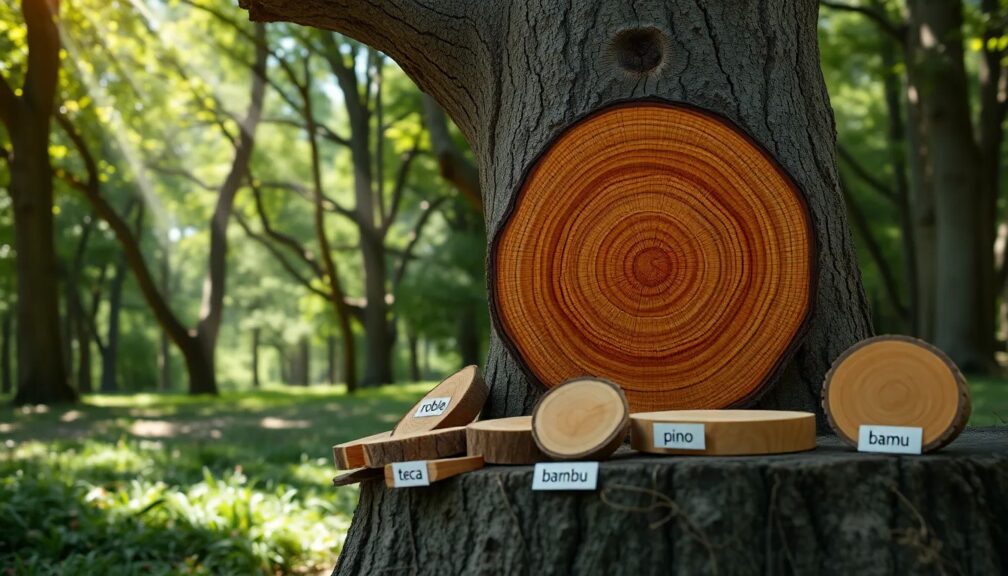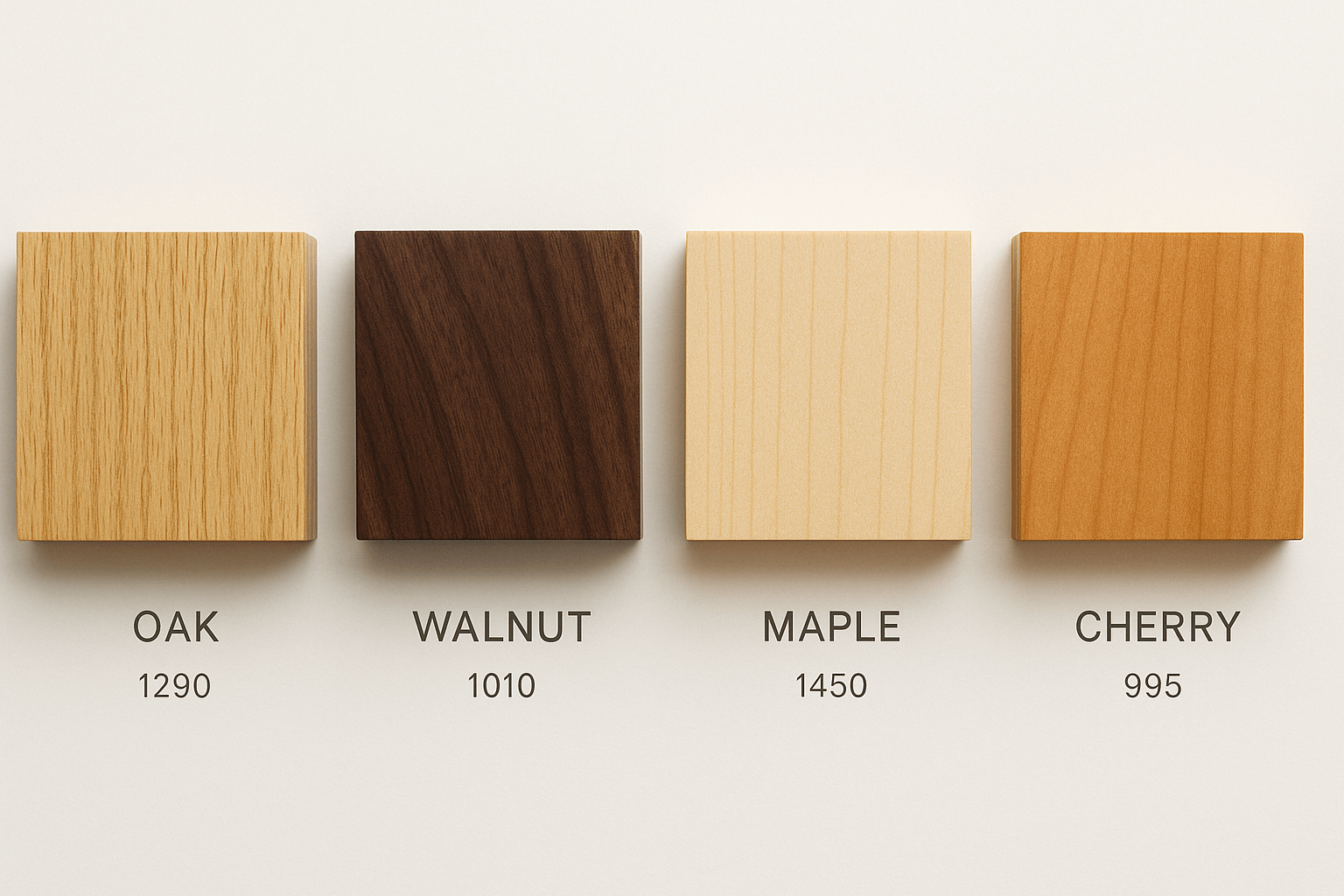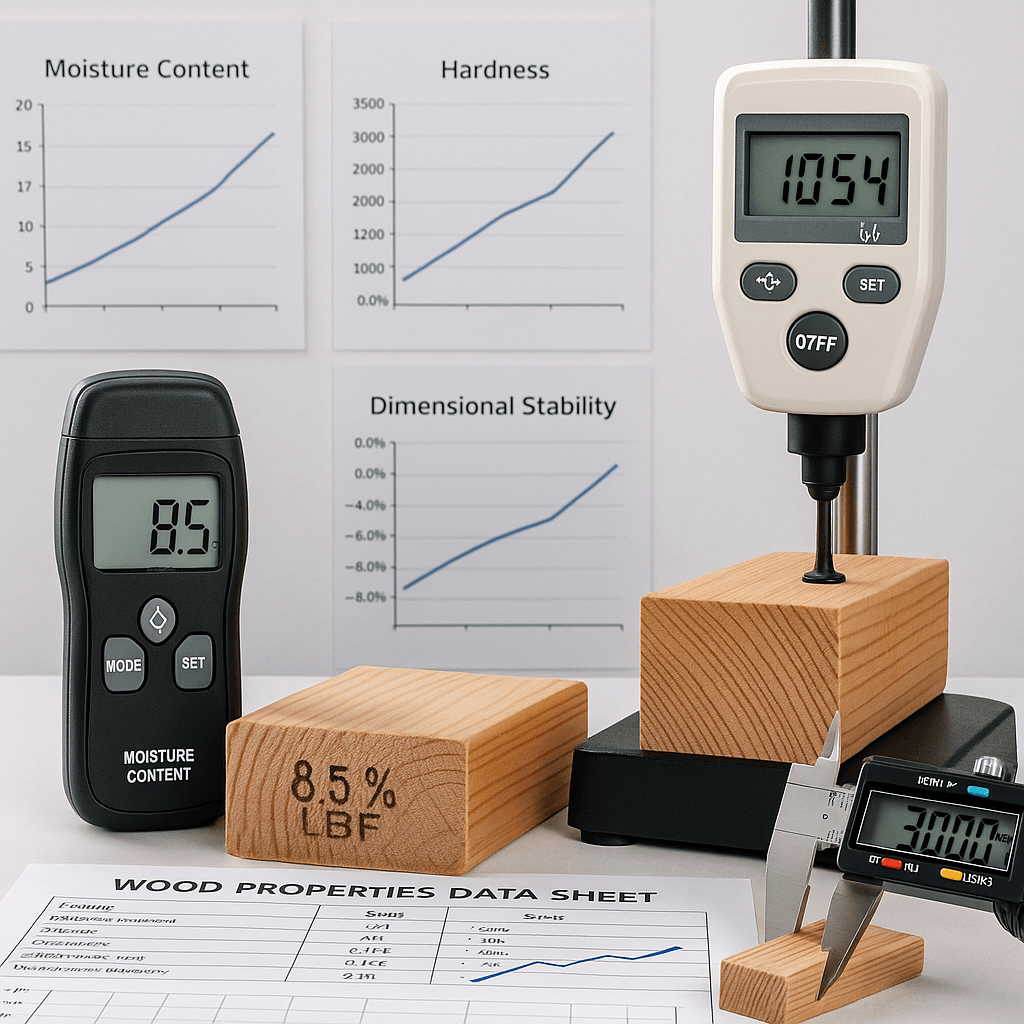Complete Guide to Wood Types and Lumber Identification
Wood remains one of the most versatile and essential materials in construction, furniture making, and specialized craftsmanship. For professionals working with timber, understanding wood characteristics, identification techniques, and proper species selection directly impacts project success and material investment decisions.
This comprehensive resource serves construction professionals, furniture makers, architects, and wood craftsmen who require precise information for material specification and project planning.
Understanding Wood Classification: The Foundation of Professional Selection
Hardwood vs Softwood: Beyond Basic Terminology
The distinction between hardwood and softwood extends beyond density measurements. This botanical classification system impacts grain structure, workability, and application suitability:
Hardwoods originate from deciduous trees (angiosperms) that shed leaves annually. These species typically feature complex grain patterns, higher density ranges, and enhanced durability characteristics. Professional applications include premium furniture, architectural millwork, flooring systems, and specialty construction components.
Softwoods derive from coniferous trees (gymnosperms) maintaining needle foliage year-round. Despite the nomenclature, many softwood species exhibit substantial strength characteristics. These materials dominate structural framing, exterior applications, and cost-effective construction solutions.
Professional Wood Type Selection Guide
Primary Hardwood Species for Professional Applications
Oak (Quercus spp.): Available in red and white varieties, oak delivers exceptional strength-to-weight ratios with distinctive grain patterns. White oak offers superior moisture resistance for exterior applications, while red oak provides consistent machining characteristics for interior millwork. Janka hardness: 1,290-1,360 lbf.
Walnut (Juglans spp.): Premium furniture-grade hardwood featuring rich chocolate-brown heartwood with contrasting sapwood. Excellent dimensional stability and superior finishing characteristics make walnut ideal for high-end cabinetry and architectural details. Moderate working properties accommodate both hand and machine tool applications.
Maple (Acer spp.): Hard maple provides exceptional durability for high-traffic flooring and impact-resistant applications. Consistent grain structure and light coloration accept stains uniformly. Soft maple varieties offer similar working characteristics with reduced density for specialized applications.
Cherry (Prunus spp.): Exhibits unique photosensitive properties, darkening from light pink to deep reddish-brown under UV exposure. Excellent machining characteristics and smooth finishing properties make cherry suitable for premium furniture and interior millwork projects.
Essential Softwood Species for Construction Professionals
Douglas Fir (Pseudotsuga menziesii): Industry standard for structural applications, featuring high strength ratings and excellent dimensional stability. Consistent grading standards and availability in large dimensions support heavy timber construction and engineered lumber manufacturing.
Pine (Pinus spp.): Multiple species serve diverse professional applications. Eastern white pine offers superior workability for millwork, while southern yellow pine provides structural strength for framing applications. Understand species-specific characteristics for optimal selection.
Cedar (Cedrus spp./Thuja spp.): Natural extractives provide inherent decay and insect resistance for exterior applications. Western red cedar and eastern white cedar offer different working characteristics and appearance grades for siding, decking, and specialty construction.
Identifying Wood Types: Professional Techniques
Visual Identification Parameters
Grain Pattern Analysis: Examine growth ring prominence, ray structure, and grain orientation. Hardwoods typically display complex ray patterns, while softwoods feature simpler cellular structures.
Color and Figure Assessment: Note heartwood/sapwood contrast, natural coloration, and figure patterns. Document color changes under different lighting conditions for accurate species verification.
Physical Property Testing
Density Evaluation: Calculate specific gravity using standard measurement protocols. Density ranges provide preliminary species identification data when combined with visual characteristics.
Hardness Assessment: While formal Janka testing requires laboratory equipment, field hardness tests using controlled penetration methods offer comparative data for species verification.
Aromatic Characteristics: Many species exhibit distinctive scents. Cedar, pine, and walnut display recognizable aromatic properties that assist field identification.
Access Complete Technical Specifications
Get instant access to detailed Janka ratings, density data, and working characteristics for over 100+ premium wood species in our professional database.
Explore Wood Database
Wood Properties Critical for Professional Applications
Moisture Content and Dimensional Stability
Proper moisture content management prevents warping, checking, and joint failure. Kiln-dried lumber typically ranges from 6-12% moisture content depending on service environment. Equilibrium moisture content varies by geographic location and seasonal conditions.
Strength Characteristics and Load Ratings
Understanding modulus of rupture, modulus of elasticity, and compression values ensures appropriate structural applications. Consult lumber grading standards and engineering specifications for load-bearing applications.
Thermal and Acoustic Performance
Wood's cellular structure provides natural insulation properties with R-values ranging from 1.25-2.5 per inch depending on species and density. Acoustic performance varies significantly between hardwood and softwood species.
Type of Wood Applications in Professional Practice
Furniture Making and Millwork
Species selection impacts finishing schedules, joint strength, and long-term performance. Consider seasonal movement, grain direction, and hardware compatibility during design phases.
Construction and Structural Applications
Lumber grading, span ratings, and connection details require species-appropriate specifications. Understand building code requirements and regional availability for cost-effective material selection.
Specialty Applications
Musical instruments, turned objects, and decorative elements demand specific working properties and appearance characteristics unique to individual species.
Advanced Wood Identification Resources
For comprehensive species identification and technical specifications, explore our Wood Database featuring detailed profiles of premium hardwoods and specialty species. Access technical data sheets, working characteristics, and application guidelines for professional project planning.
Professional wood identification extends beyond visual assessment to include microscopic analysis, chemical testing, and standardized measurement protocols. Develop systematic identification procedures for consistent material verification in professional practice.




